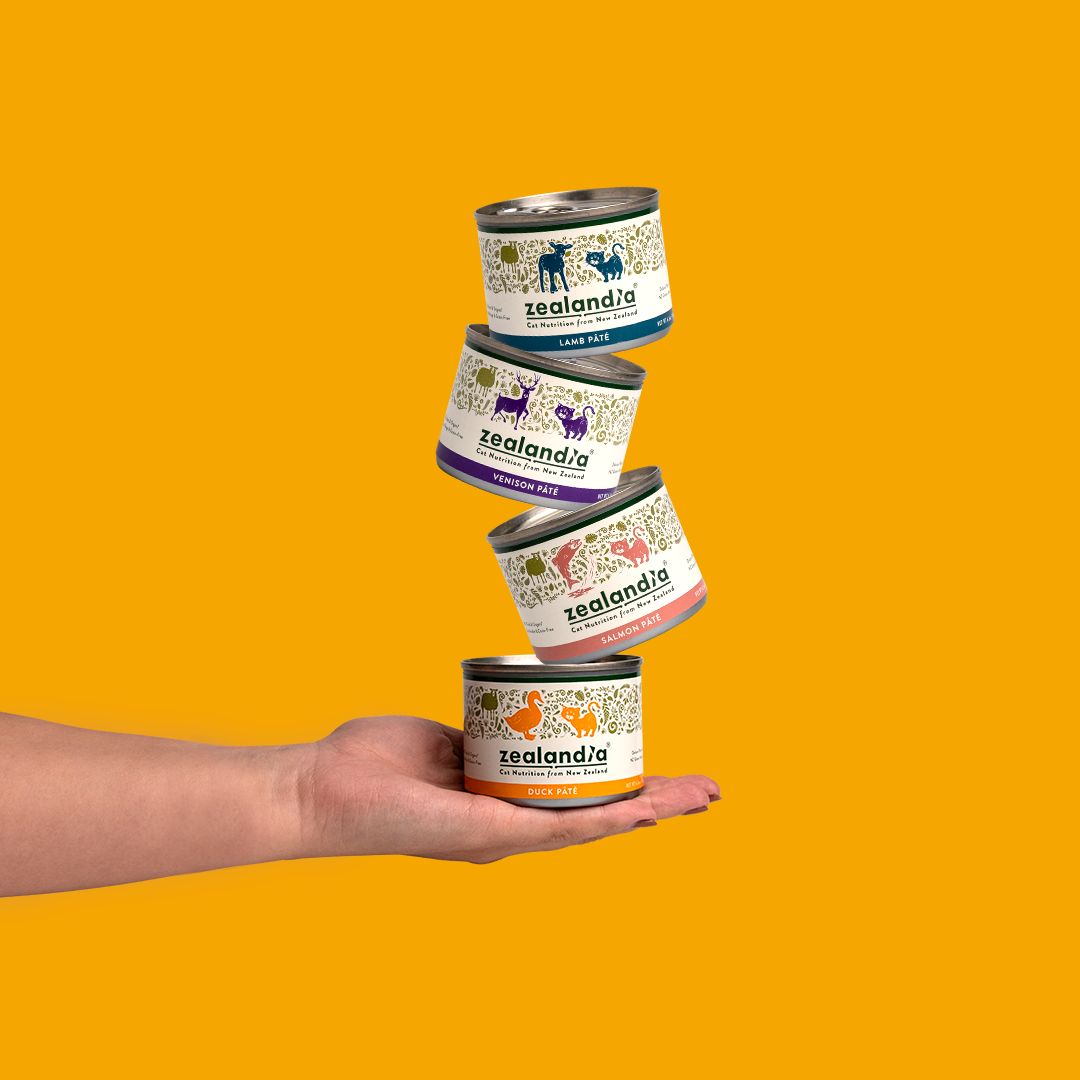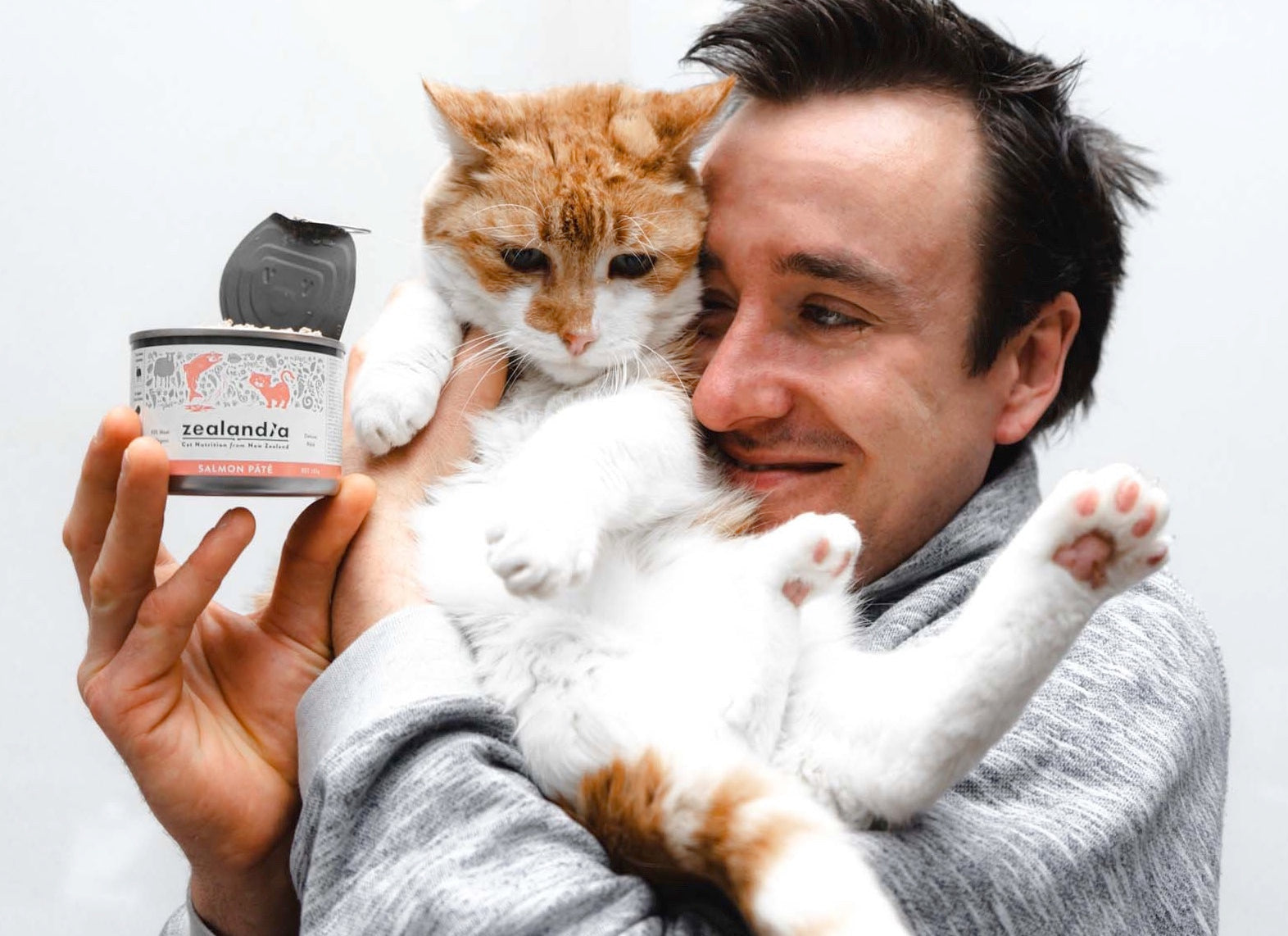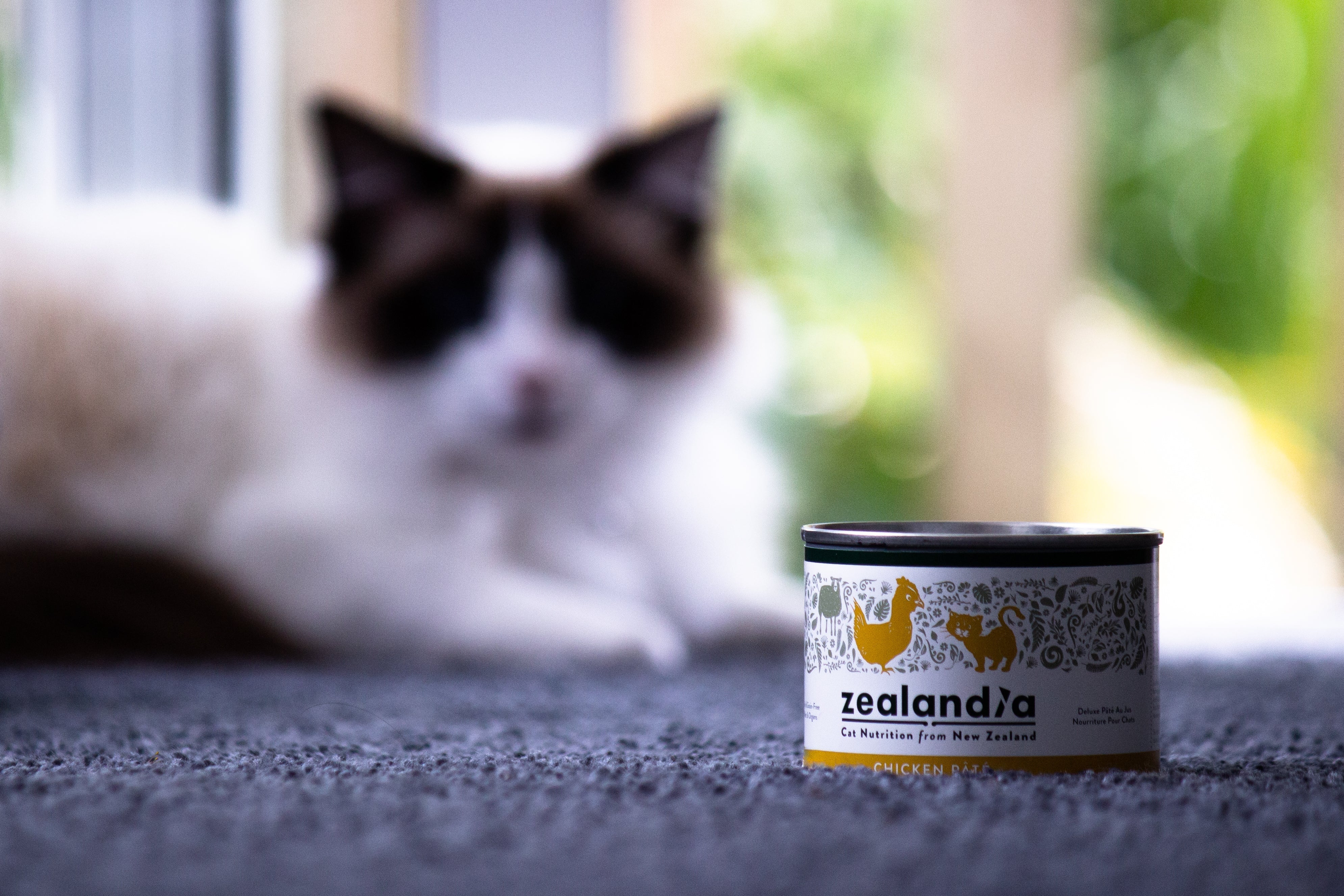Hyperthyroidism - What wet food is best for cats and dogs?

Written by Dr Sarah-Jane Molier BVM&S MRCVS BSc (United Kingdom)
Hyperthyroidism is the most common endocrine disorder seen in elderly cats. It is estimated to affect around 10% of cats over the age of 10 years, with some surveys even reporting a prevalence of around 20%. Luckily, hyperthyroidism is rare in dogs. Diet can play an important role in the management of, and recovery from, hyperthyroidism, either as a sole treatment or alongside other therapies. So, let’s explore what food is best for cats and dogs with hyperthyroidism, with a focus on cats.
What is hyperthyroidism?
Hyperthyroidism is a condition in which the thyroid glands are over-active. In hyperthyroidism, the thyroid glands (in the neck) produce too much thyroid hormone. Since thyroid hormones are involved in regulating many processes in the body, including metabolic rate, the symptoms of hyperthyroidism can be severe and cause serious illness.
Hyperthyroidism is rare in dogs. When it does happen, it is usually caused by cancer of the thyroid gland (thyroid carcinoma). While hyperthyroidism is common in middle age to older cats, luckily it is usually (in 98-99% of cases) caused by non-cancerous changes in the thyroid gland, known as ‘nodular hyperplasia’. It is very rare (1-2% of cases) for a malignant tumour (cancer) to cause hyperthyroidism in cats.
Symptoms of hyperthyroidism
The most common symptoms of hyperthyroidism in dogs and cats include:
- Weight loss
- Increased appetite
- Increased thirst
- Increased urine output
- Excitability or hyperactive behaviour
- Sickness
- Diarrhoea
- Poor coat condition
- An enlarged thyroid gland
Since thyroid hormones affect so many processes in the body, hyperthyroidism can also affect the cardiovascular system (heart and blood vessels). Symptoms can also then include a heart murmur, difficulty breathing, enlargement of the heart, high blood pressure, and even congestive heart failure.
Rarely, some cats might show slightly different symptoms, including lethargy, depression, and lack of appetite. This is known as ‘apathetic hyperthyroid’.
Treatment options for hyperthyroidism
Dogs with hyperthyroidism will need to be assessed for the size of the tumour, whether it has invaded any important structures and whether it has spread. Treatment options could include surgery, chemotherapy, radiation, radioactive iodine therapy, medical management, or a combination. Unfortunately, the long-term prognosis (outcome) is usually poor.
In contrast, fortunately, most cats can be successfully treated. The current treatment options for cats are:
- Medical management
This involves giving anti-thyroid drugs, which are available as tablets, liquid, or a cream. Medical treatment does not offer a cure, but can very successfully manage the condition. It can be used as a long-term treatment option, or to stabilise a cat before they undergo other treatments.
- Surgery
Surgery involves removing the affected thyroid tissue (thyroidectomy). This offers a permanent cure in some cases. However, all surgeries carry some risks and so thyroidectomy may not be suitable for all cats.
- Radioactive iodine therapy
Radioactive iodine is a popular treatment option since it offers a cure in most cases and is generally considered a safe treatment with no significant side effects. Radioactive iodine is injected into the cat, where it travels to and is taken up by the affected thyroid tissue. Here it destroys the abnormal thyroid tissue, without affecting other tissues.
- Diet
Prescription diets are available which contain restricted levels of iodine. Iodine is needed to make thyroid hormones, so restricting iodine in the diet will limit the amount of hormones the thyroid gland can make. This offers management rather than a cure, but studies have shown that a restricted iodine diet can be successful in many cases. One small study showed that 75% of cats were controlled by 4 weeks and in another study, 83% of cats went into remission on the diet.
Your veterinarian will discuss all the treatment options available to your cat, as well as which treatment would be most suitable for your cat’s unique needs.
What’s the best diet to feed my hyperthyroid cat?
The best diet for your cat with hyperthyroidism will partly depend on their overall health, including any other medical conditions they may have. Your veterinarian is the best person to advise you on the best diet for your individual cat’s needs. Here are some general dietary considerations:
- Prescription diet
You should only feed a prescription diet with restricted iodine levels (0.2 ppm) if your veterinarian has advised you to do so, as the treatment for hyperthyroidism. The prescription diet would need to be fed for life, and must strictly be the only thing your cat eats. So no more hunting, eating at neighbours houses, or treats! This diet should never be fed alongside the other treatment options, nor be fed to (or eaten by) healthy cats.
If your cat is having any of the other treatment options (i.e. not prescription diet therapy), then here are some general guidelines:
- Good quality, high protein diet
Cats are obligate carnivores, meaning they must have meat in their diet in order to thrive and meet their protein requirements. In hyperthyroidism, cats lose weight and muscle mass despite a healthy appetite. This is because hyperthyroidism increases protein catabolism, meaning that the body starts breaking down its own protein in order to meet its daily protein requirements.
Feeding a diet with high levels of good quality protein can help recovery (alongside veterinary treatment), by supporting muscle mass and weight gain. A healthy adult cat should be eating a diet containing a minimum of 26% protein (as dry matter). An elderly hyperthyroid cat with muscle wasting might have a higher minimum protein requirement, nearer 30-40% protein as dry matter.
To work out the protein % as dry matter from a canned food label you will need the following calculation:
- 100 - ‘moisture % (max)’ = % dry matter, then work out:
- Crude protein (min) / % dry matter
- Multiply the result of 2. by 100 = % protein as dry matter
Remember that the quality of the protein is just as important as the amount. If a poor quality protein is used, the amount the body can actually access and use will be lower.
While hyperthyroidism doesn’t cause kidney disease, chronic kidney disease is also very common in elderly cats. This means that hyperthyroidism and chronic kidney disease (CKD) often occur together. Cats with CKD have specific dietary requirements too, and managing the two conditions together can be tricky. Cats with CKD also need high-quality protein to support muscle repair, and in the early stages of CKD, the protein requirements would be similar to those stated above. In the later stages of CKD, cats can benefit from a restricted protein diet. Your veterinarian would be able to advise you on this.
- Low phosphorous
Since cats with hyperthyroidism may also have chronic kidney disease (CKD), it makes sense to be mindful of the phosphorous content of the diet too. In many cases, the hyperthyroidism ‘hides’ the CKD on blood tests, so the CKD is not diagnosed until after the hyperthyroidism is controlled. This means feeding a diet with controlled phosphorous and sodium levels is sensible while treating hyperthyroidism.
- Low carbohydrate
Hyperthyroid cats can also commonly have mild to moderately high blood glucose (hyperglycemia). While high blood glucose is hard to interpret in cats, since it can increase with stress, some studies suggest that hyperthyroid cats also have a degree of glucose intolerance and insulin resistance, similar to diabetes. It follows that a low carbohydrate diet would suit most cats with hyperthyroidism.
- Water content
Cats with hyperthyroidism urinate more than normal. While they also drink more than usual, any help in maintaining hydration can only be beneficial! Wet food is ideal, as it has a high water content, which of course will benefit cats also suffering from chronic kidney disease too. Remember to always make sure your cat has access to clean, fresh water.
What’s the best diet to feed my hyperthyroid dog?
The best diet for your dog will depend on how poorly your dog is, whether they have any other medical conditions, and which treatment option (if any) you choose. As a general rule, your dog will need a high-energy, easily digestible diet, with a high-quality protein source. This is to help your dog to regain weight and rebuild muscle mass. Wet food can help with maintaining hydration.
Summary
If your cat has been diagnosed with hyperthyroidism, it’s perfectly natural that you should feel anxious. Luckily, most cats with hyperthyroidism can be managed, or even cured, very successfully. Your veterinarian will discuss all the treatment options available with you.
If your dog has been diagnosed with hyperthyroidism, the outlook is sadly poorer. Your veterinarian will be there for you and support you, every step of the way.
Only your veterinarian can treat your pet for hyperthyroidism. However, feeding a good quality, appropriate diet can support their recovery, alongside their medical treatment.
----------------------------------------------------------------------------------------------------------------------------
Notes from the team at Zealandia:
Our canned food products contain 95% meat & organs (excluding water sufficient for processing). This is a typical summary of ingredients:
Deboned Meat: ~61.5%
Lamb Organs: ~30% (Liver, Lung, Green Tripe, Heart, Kidney, Plasma)
NZ Green Mussels: ~3%
Dried Yeast: ~3%
Vegetable Gums: ~1% (Guar Gum, Agar Agar)
Salmon Oil: ~0.5%
Vitamins & Minerals: ~1% (Calcium Carbonate, Potassium Chloride, Taurine, Choline Chloride, Iron Proteinate, Zinc Glycine Complex, Niacin Supplement, Alpha-Tocopherol Acetate, Sodium Selenite, Manganese Proteinate, Copper Glycine Complex, Thiamine Mononitrate, Calcium Pantothenate, Riboflavin, Pyridoxine Hydrochloride, Vitamin A Acetate, Biotin, Vitamin B12 Supplement, Calcium Iodate, Folic Acid, Cholecalciferol)
----------------------------------------------------------------------------------------------------------------------------
The Zealandia variants most suitable for dogs and cats with a history of Hyperthyroidism are: Goat, Venison, Chicken (Kitten), Salmon (Kitten).
- High protein
- Moderate fat
- Low phosphorus
- Low iodine
- Moderate energy (supports metabolism)
View the Zealandia Cat Food Nutrition Profile (PDF)
View the Zealandia Dog Food Nutrition Profile (PDF)



